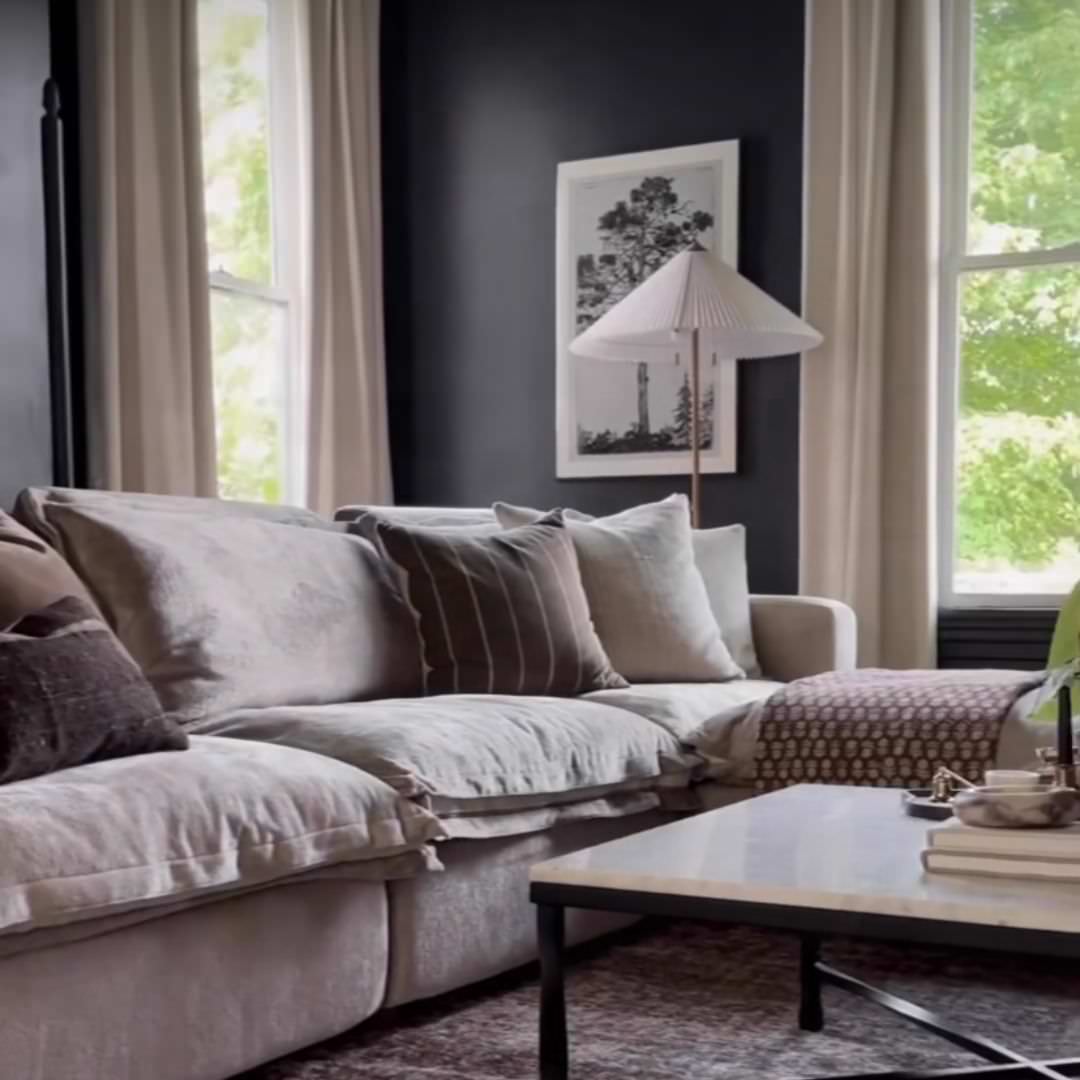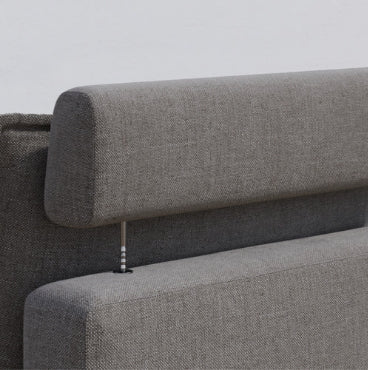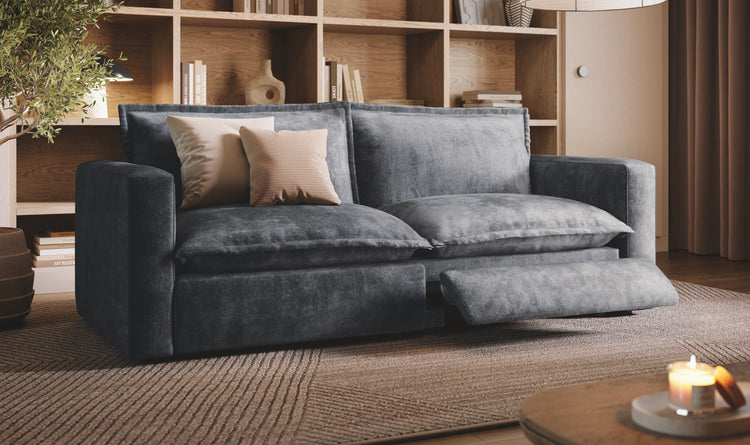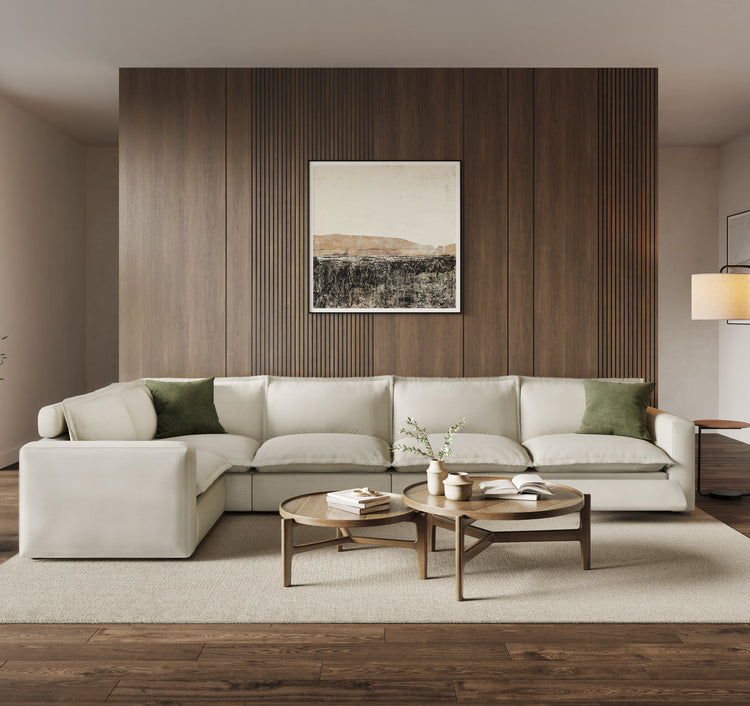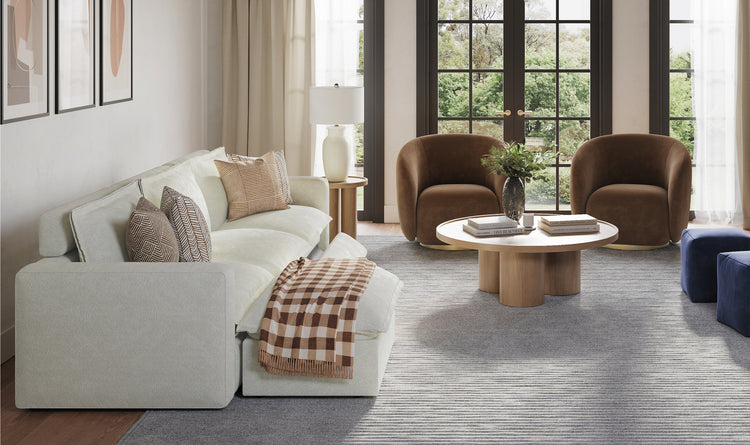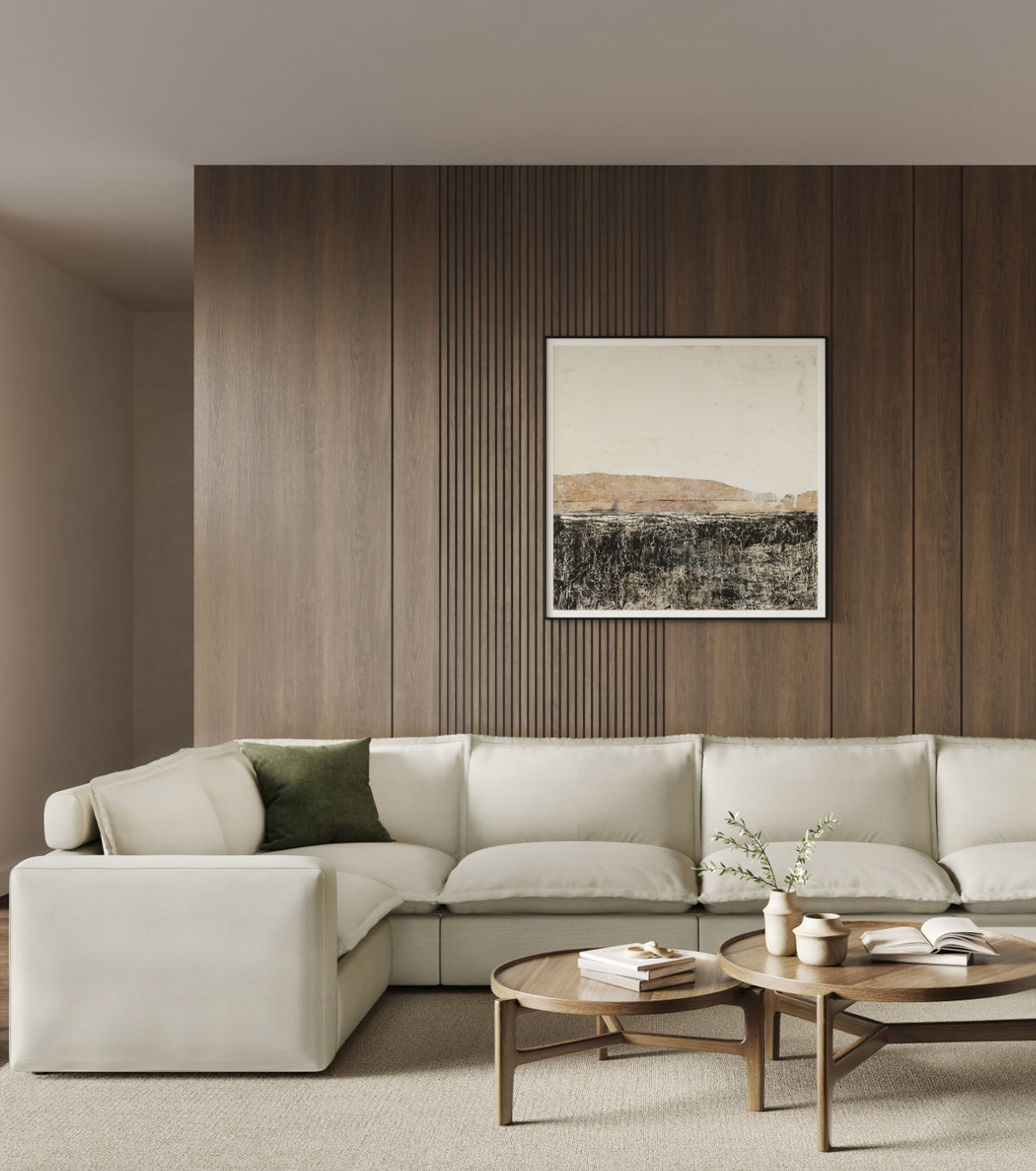Quick Answer
Spring allergy sufferers should choose microfiber or leather couches with removable covers and raised legs. These materials don't trap allergens like pollen and dust, while the design makes regular cleaning easier. Weekly vacuuming and occasional deep cleaning will keep your stylish couch from triggering allergy symptoms during peak season.
Introduction
Sneezing through spring while trying to enjoy your newly decorated living room is no fun. If you're battling allergies but still want a stylish couch for the season, you're not alone. Many people don't realize their furniture might be making their symptoms worse by trapping pollen, dust mites, and other allergens. This article covers the best couch materials for allergy sufferers—like smooth leather that allergens can't penetrate and easy-clean microfiber—plus simple design features that can make a huge difference in your comfort while still looking great in your spring refresh.
Why Do Spring Allergies Get Worse Indoors?
Spring allergies don't stay outside—they follow you right into your living room. During spring, pollen from trees, grasses, and flowers becomes airborne and enters homes through open windows, on clothing, and on pets. Inside your home, dust mites thrive in warm, humid conditions, while mold spores increase as spring rains create damp conditions. These allergens settle on furniture, especially couches where we spend hours sitting.
Common Indoor Allergen Sources
Your couch can become a major collection point for allergens due to its size and materials. Here's how allergens accumulate in your living space:
- Pollen enters your home on clothing, pets, and through open windows during spring.
- Dust mites feed on dead skin cells and thrive in the fabric layers of upholstered furniture.
- Pet dander becomes trapped in couch fibers and padding, causing reactions even when pets aren't present.
- Mold spores settle into furniture in humid environments or after spills that aren't properly dried.
- Everyday dust contains a mixture of allergens that collect in seams and under cushions.
Material Impact on Allergy Control
The right couch materials can significantly reduce your exposure to allergens. Consider these important factors:
- Non-porous materials like leather prevent allergens from penetrating into the furniture.
- Tightly woven synthetic fabrics trap fewer allergens than loose, natural fibers.
- Removable, washable covers allow for regular deep cleaning to eliminate accumulated allergens.
- Raised furniture with legs prevents dust and allergen buildup underneath the couch.
- Smooth surfaces without tufting or deep seams provide fewer hiding places for dust and allergens.
Best Couch Materials for Allergy Sufferers

Finding the right couch when you have allergies means looking beyond style to consider how different materials might affect your symptoms. Some materials naturally resist allergens, while others can make your spring sniffles much worse. Here's what you should know about the most allergy-friendly couch options.
1. Microfiber
Microfiber is one of the best fabric choices for individuals who have allergies. Its extremely tight weave creates a barrier that prevents allergens from seeping deeply into your furniture. Microfiber, as opposed to more loose fabrics, resists liquids, making it less prone to mold growth from spills. Most microfiber sofas come with removable covers that can be washed in a machine on a regular basis to eliminate built-up allergens. This synthetic fiber creates an environment less hospitable to dust mites than natural fibers. The majority of microfiber options now include built-in stain resistance, making them appropriate for everyday family use while keeping allergens out.
2. Performance Fabrics
Performance fabrics represent the cutting edge in allergy-friendly furniture materials. Originally developed for commercial settings like hospitals and hotels, these fabrics now bring their superior durability and allergen resistance to home furniture. The best performance fabrics are manufactured without PFCs, PFOAs, and PFAs (often called "forever chemicals") that can trigger sensitivity in some individuals. Look for Oeko-Tex® certified options, which have been tested to ensure they're free from harmful substances. These fabrics maintain their integrity even with frequent cleaning—an essential quality when you need to remove allergens regularly. Many brands now offer pet-friendly versions that resist pet hair and dander while standing up to claws and daily use.
3. Synthetic Velvet
If you love the luxurious look of velvet but worry about allergies, synthetic velvet offers a beautiful solution. Unlike traditional velvet made from silk or cotton, synthetic velvet resists dust and allergens more effectively while maintaining that soft, plush feel. The shorter pile height of many synthetic velvets means fewer places for allergens to hide compared to their natural counterparts. These materials are also typically easier to clean—many can be spot cleaned or even have removable, washable covers. Modern manufacturing techniques have created synthetic velvets with stain-resistant properties, making them both practical and elegant. For the best allergy protection, look for commercial-grade synthetic velvets that combine beauty with durability and easy maintenance.
4. Linen
Traditional linen, while beautiful and breathable, can be problematic for allergy sufferers due to its characteristic loose weave that traps dust and pollen. However, synthetic linen alternatives offer the same airy, natural appearance without allergy concerns. These fabrics mimic the textured look and casual elegance of linen but with a tighter weave that resists allergen buildup. Many linen alternatives are blended with performance fibers to add stain resistance and durability. These synthetic versions are typically easier to clean and maintain than natural linen, which often requires professional cleaning. For the most allergy-friendly option, choose linen alternatives with removable, washable covers that allow for regular deep cleaning to eliminate any accumulated allergens.
5. Leather
Leather is one of the best choices for allergy sufferers because of its smooth, non-porous surface. Unlike fabric, leather doesn't trap allergens within its fibers, making it easier to keep clean.
- Genuine leather repels dust, pollen, pet dander, and dust mites rather than absorbing them.
- A simple wipe-down with a damp cloth removes most allergens from leather surfaces.
- Leather doesn't harbor moisture, which helps prevent mold and mildew growth.
Couch Design Features That Fight Allergies

Choosing the right fabric helps with allergies, but don't overlook your couch's design features—they're equally important for reducing allergen buildup. Even the most allergy-resistant materials can harbor dust and irritants if the furniture construction creates hidden collection points.
- Removable, Washable Covers: Look for couches with zippered, machine-washable covers for both cushions and frames. These let you thoroughly clean the surfaces that touch your body, removing dust mites, pet dander, and pollen. For best results, choose covers designed specifically for frequent washing, and consider keeping a spare set on hand.
- Elevated Frames with Legs: Couches that sit on legs (at least 5-6 inches high) prevent dust from collecting underneath where it's hard to clean. This design allows easy vacuuming beneath the furniture and improves air circulation, which helps prevent mold growth from humidity.
- Minimal Seams and Decoration: Simple couches with smooth upholstery and fewer decorative elements collect less dust. Every seam, button, and tuft create a hiding place for allergens. Modern, clean-lined furniture with continuous surfaces is much easier to keep allergen-free than heavily detailed traditional styles.
- Modular Design Benefits: Modular couches offer unique advantages for allergy sufferers. You can completely separate each section for thorough cleaning access to all sides and underneath. This design makes it easier to remove individual pieces for deep cleaning or to take them outside for airing. Many modular options come with washable covers on every component, and their simple connection points avoid the dust-trapping crevices found in traditional sectionals. Plus, you can reconfigure your seating seasonally, making spring cleaning more effective.
- Convertible Options: Futons and daybeds can be good choices since they often accept allergy-proof mattress covers. Many have simple designs with fewer crevices and come with washable covers, making regular cleaning straightforward.
How to Keep Your Couch Allergy-Free

Keeping your couch clean helps stop dust, pet hair, and other allergy triggers from building up. A simple cleaning routine that matches your couch's material will cut down on allergens and help your furniture last longer. These easy steps will keep your couch cleaner and help you breathe easier at home.
1. Vacuum Weekly to Catch Dust Before It Settles In
A weekly vacuuming session actually makes a huge difference for allergy sufferers. Use a HEPA filter vacuum—it traps the teeny particles that other vacuums leave behind. Don't miss the crevices where cushions meet the frame, as these areas collect loads of dust and crumbs. For fabric sofas, the upholstery attachment is the way to go—just glide it over the surface in overlapping strokes to trap everything.
2. Wipe Down Leather and Microfiber Every Two Weeks
Smooth surfaces need to be wiped down every so often to stay allergen-free. For leather sofas, just use a damp cloth to wipe all surfaces every other week or so and then finish with a dry cloth so the leather is not damaged. If you have a microfiber sofa, mix one part rubbing alcohol with two parts water in a spray bottle, mist the surface lightly, and wipe with a clean cloth.
3. Wash Removable Covers When They Need It
The most valuable benefit of couches with removable covers is that you can wash them clean. Check the tag for washing instructions—most can be washed in the washing machine with mild, fragrance-free detergent. Wash them every 1-3 months, or more often if you have pets or severe allergies. Use the gentle cycle, and don't overload it with too many covers at once, which can zip up your zippers. Some covers are low-heat dryable, and some are air dry only. The heat from drying will destroy dust mites that washing might have missed.
4. Put Protective Covers Under Your Cushion Covers
For enhanced allergy protection, wear zippered allergy covers over your regular cushion covers. These work like mattress protectors and keep allergens from entering the foam, where they are hard to clean. Select covers made of tightly woven materials that screen out dust mites and other tiny allergens. These extra covers are especially helpful for people with serious allergies or asthma.
5. Spray Allergen Treatments a Few Times a Year
There are a number of sprays available that can lower allergens on your couch. Anti-allergen sprays containing tannic acid prevent allergens from dust mites, pets, and pollen from triggering reactions. Spray seasonally or after cleaning your couch, and use the instructions on the bottle. Allow the spray to dry completely before sitting on your couch again. If you'd prefer to utilize natural products, apply a light spritz of diluted eucalyptus oil, which will keep dust mites at bay. Test any spray on a hidden area first to make sure it does not stain.
6. Get Professional Cleaning Once a Year
Despite frequent cleaning, your sofa needs professional cleaning about once a year to eliminate deep-down allergens. Professional cleaners have tools that suck the dirt and allergens out deep in the furniture and cushions. Look for professionals who use hot water extraction (also known as steam cleaning) and ask to use hypoallergenic cleansers. On leather couches, look for professionals who know how to clean and condition the leather. Try to get this deep cleaning on dry weather so your couch is dry faster and does not form mold or mildew.
7. Clean Couches Mean Healthier Breathing
Cleaning couches on a regular basis makes a significant impact on the indoor air quality in your home. Vacuuming on a weekly basis prevents surface dust from accumulating, and more thorough cleaning deals with deep-seated allergens. Barrier covers prevent common allergen triggers, and treatments remove the remaining particles. All these in combination form a house with fewer places for allergens to hide.
Keep Your Couch Clean, Breathe Easier
Beyond looking at its best, it helps maintain a healthier home where you really can wind down. Vacuum on a regular basis, wipe down surfaces, clean coverings, install protective barriers, spray away allergens, and arrange to have it cleaned annually by the pros, so those sneeze-inducing allergens no longer take up residence in your living room. You’ll enjoy a more peaceful, allergy-free hours. Add these simple steps to your routine and experience the difference a truly clean couch can make in your life.
